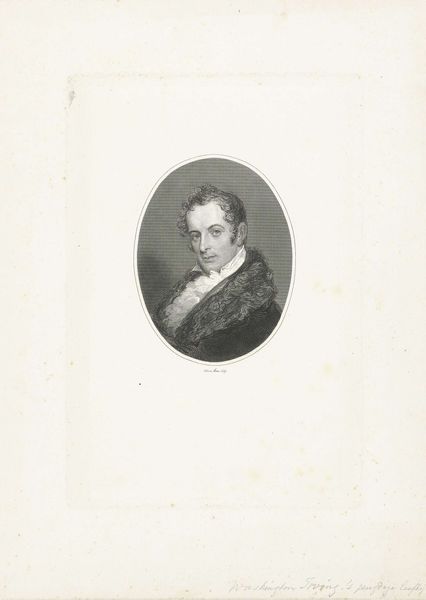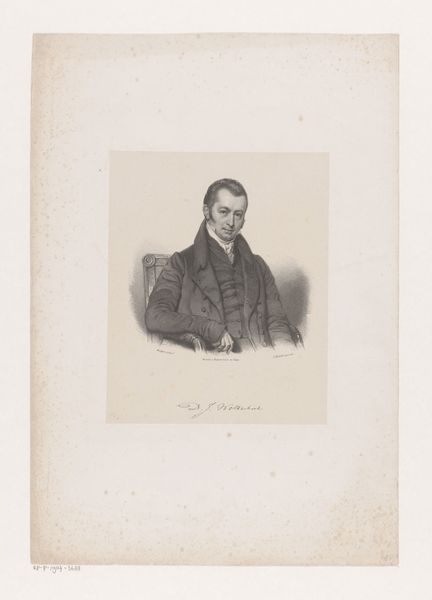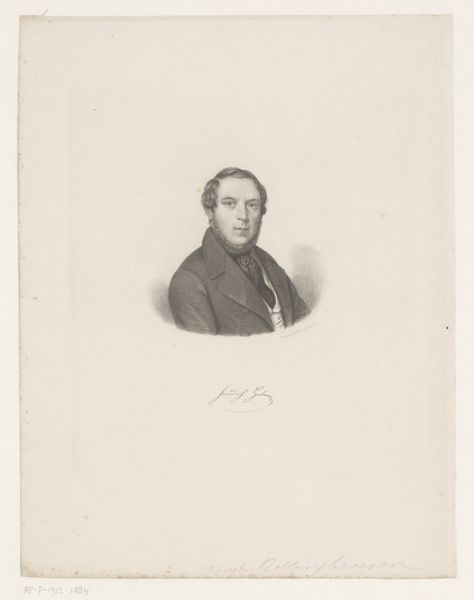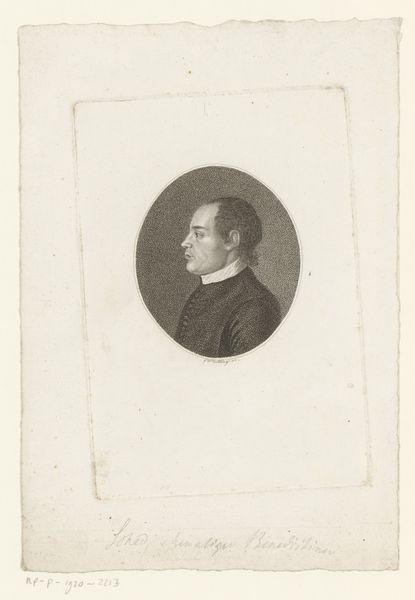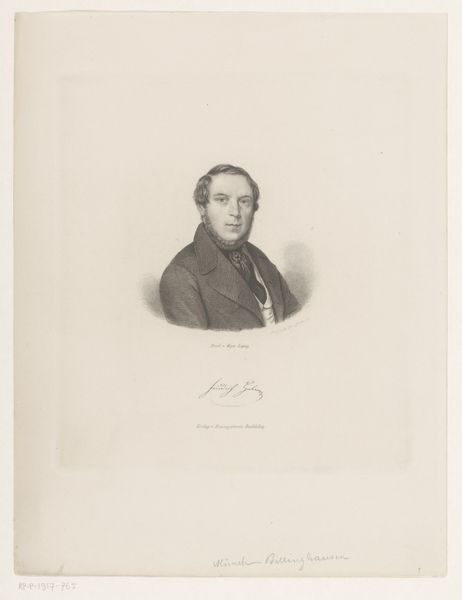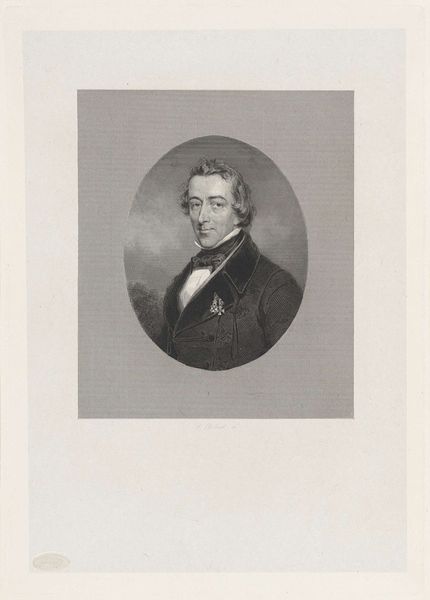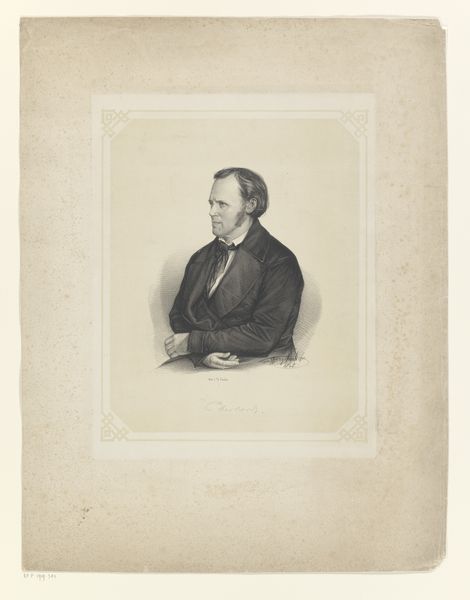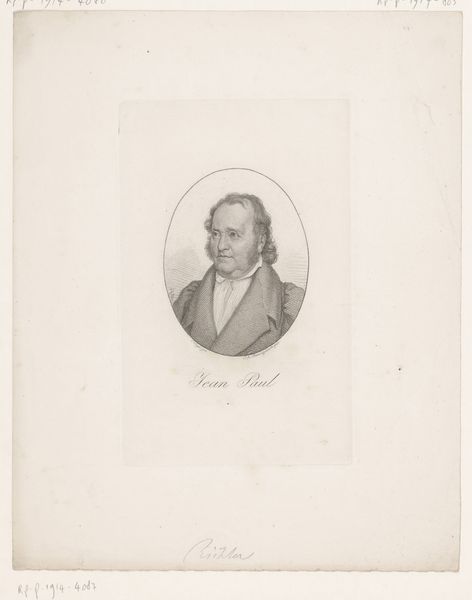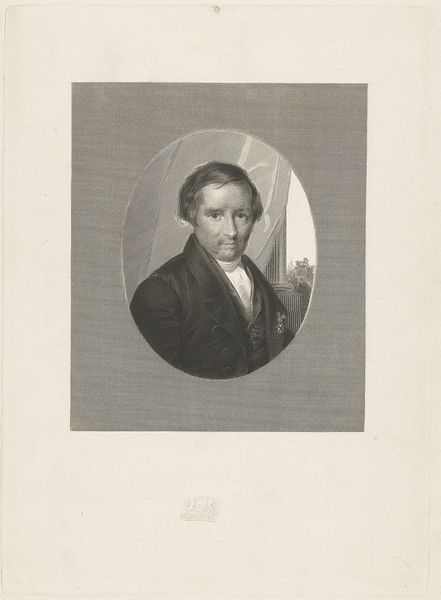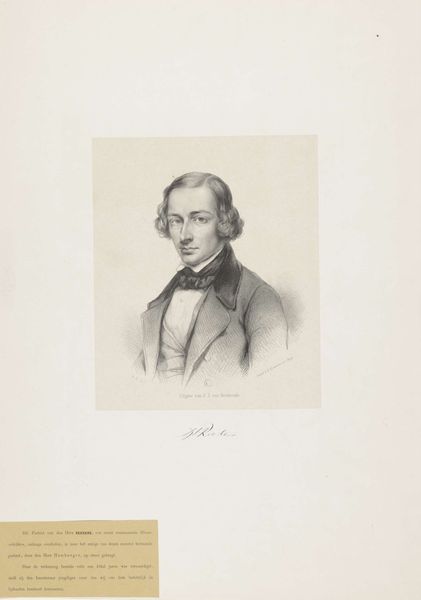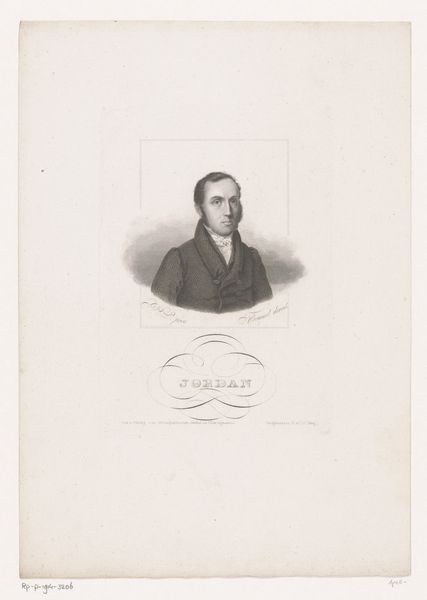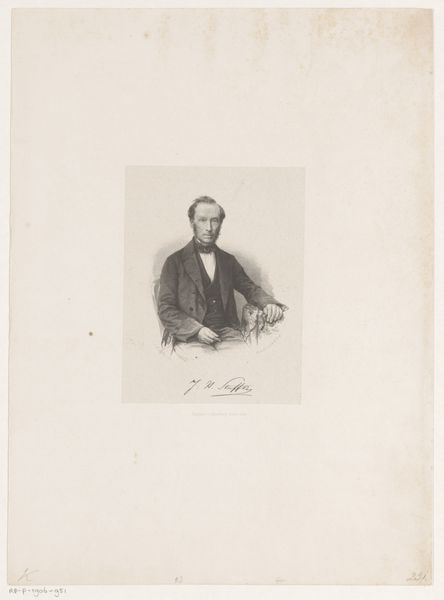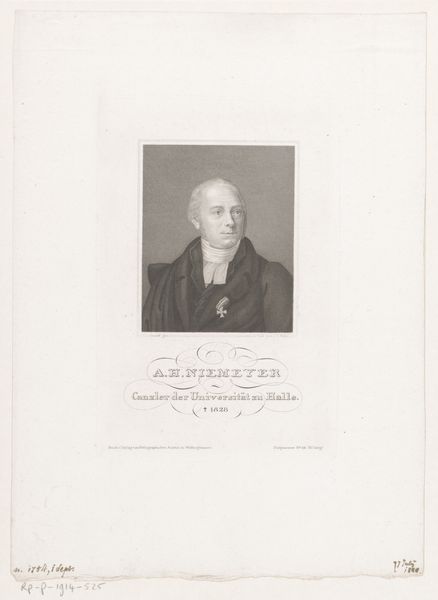
Dimensions: height 255 mm, width 189 mm
Copyright: Rijks Museum: Open Domain
Curator: Welcome to the Rijksmuseum. Today, we are exploring a captivating print, "Portret van Bernhard ter Haar", crafted by Johann Wilhelm Kaiser. The piece, dating from 1828-1900, is an engraving showcasing a distinguished gentleman. What's your initial reaction? Editor: Somber. The sitter's dark suit against the lighter background gives the impression of gravitas. It's formal, perhaps a little intimidating, as though we're encountering a man deeply entrenched in thought and authority. Curator: It certainly embodies the Romantic and Academic styles so prevalent in art of the period. Prints like this served important social functions, disseminating images and projecting power. Editor: Let's focus on those background objects. Those columns are symbolic. Can you offer any insights regarding the meaning? Curator: Pillars speak of status. And don’t forget, this work would likely have been commissioned by a rising middle class keen to participate in creating its own markers of importance, diverging from previous hereditary notions of what signified elite status. Editor: Indeed. Look closely at the medal or decoration he wears. This seems to assert his individual merit. It suggests he belongs to a world of respected institutions, power networks, which defined elite men in this time period. It’s almost performative, wouldn't you agree? Curator: Absolutely. Visual markers communicated affiliation and identity within increasingly formalized social structures. This image encapsulates much of what the period signifies, particularly for men trying to negotiate tradition and change. It highlights their aspirations, insecurities, and struggles for recognition and belonging within emergent power dynamics of the time. Editor: It shows so vividly how material possessions create that desired effect for status and wealth. They have the potential to become like "official" objects, almost magically turning material realities into symbolic systems. I find it amazing! Curator: A beautiful way of describing this work. Thanks for lending your symbolic interpretation, that has been illuminating! Editor: My pleasure. Considering the weight of symbols like columns, it helps in examining cultural beliefs as a mirror, reflecting historical truths that remain relevant to this day.
Comments
No comments
Be the first to comment and join the conversation on the ultimate creative platform.
